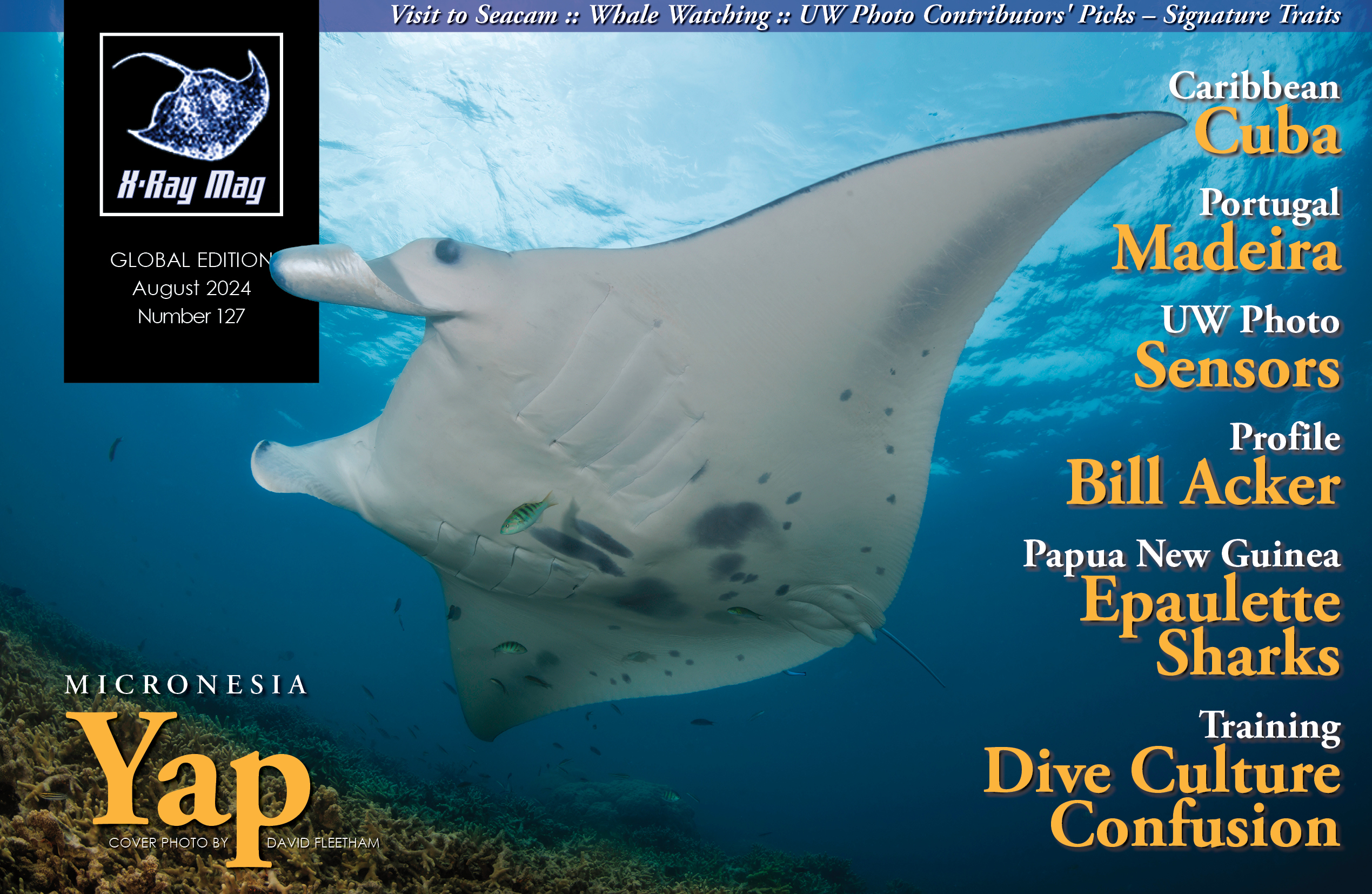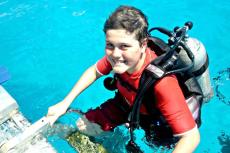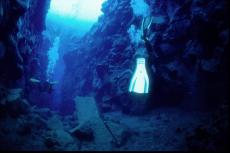What happens when confusion hits a group of divers during a dive trip? Simon Pridmore takes a closer look and offers insights and advice to keep you diving safely.
Contributed by
A friend recently sent me a detailed account of the Red Sea dive trip he joined in 2022. Lots of people send in “it happened to me” stories. They have read my books and know I like tales like this. I dissect them, feast on them, and then regurgitate them as magazine articles or newsletter anecdotes with the idea that divers might learn something from them.
Some reports tell the story of a problem-free fortnight in paradise, extolling the virtues of a destination or dive operator. Others talk about a dive that went wrong or a dive centre that did not live up to expectations.
And then, there are the stories that seem relatively unexciting at first but open an entire Pandora’s box of issues when you delve deeper. These are the stories I enjoy the most, and this one is an excellent example.
The first trip in a long time
In 2022, the Covid-19 pandemic was starting to fade, and the scuba diving industry was emerging from two years of inactivity. Twenty friends from the United States and Canada, who travelled regularly as a group and had logged many dives together over the years, met up in Egypt for a liveaboard trip. Most had not been diving for over two years.
They were an experienced bunch. Seventeen of them had over a thousand dives, five were rescue divers, four were also divemasters, and one was also an active instructor. They considered themselves well-trained and self-sufficient. They normally dived with liveaboard operators who maintained high standards of service and were used to catering to customers from North America.
As soon as the divers arrived, they quickly discovered that the particular Red Sea liveaboard they had chosen was not accustomed to working with North American divers, as the boat cylinders provided for them were mostly 15-litre cylinders fitted with DIN-style valves. This caused some consternation as the group was used to diving with 12-litre cylinders, and all but a few of them had regulators with yoke-style first stages.
The boat crew responded well and managed to source enough smaller cylinders and screw-in DIN to yoke valve adapters to equip the entire group. Nevertheless, this took a while. Night had fallen by the time everything had been sorted out, all the divers had set up and dry-tested their gear, and the boat could finally depart. During the process, one diver needed a cylinder O-ring to be replaced, but apart from that, there were no other significant issues, and they went to bed happy that the problem had been overcome.

Dive day 1
The following day, on the first dive, one of the divers entered the water and began his descent. Almost immediately, he heard the sound of rushing bubbles behind his head and resurfaced in a whirlpool of foam. He signalled to the crew and reboarded the dive boat while his buddy waited patiently at the surface.
The crew tried reseating the regulator first stage on the cylinder valve, assuming the diver had not attached it properly, but that did not help. The valve still leaked. They then removed the DIN to yoke valve insert, replaced it with another one and fitted the regulator again. The subsequent hissing sound told them that this had not solved the problem either, so they took the valve insert out again and replaced the diver’s regulator with one of the liveaboard’s regulators, which had a DIN first stage. This worked perfectly; the diver rejoined his patient buddy, and they had a great, though somewhat shorter, dive.
Dive day 2
On dive day 2, four more incidents occurred where cylinder O-rings blew while the divers were underwater. Each time, air would start pouring out of the cylinder valve, and when the divers glanced at their pressure gauges, they could see their remaining air pressure dropping quickly.
One incident took place at a depth of around 22m and, with air running out fast, the diver went to share air with the divemaster. However, during their air-sharing swim back to the boat, the mouthpiece came off the second stage of the divemaster’s octopus, and they had to buddy-breathe, taking turns on the divemaster’s primary second stage all the way to the surface. Fortunately, the diver, in this case, was experienced enough to stay calm and had no problem performing this impromptu test of a rarely practised skill.
In addition to the interrupted and aborted dives, there were also numerous instances where diving was delayed by O-ring failures on the dive deck while divers were gearing up or waiting at the surface for their team members to join them.
The group was rattled by this succession of problems. What could be behind this rash of incidents? Was it a single problem, or was it a coincidence of multiple issues, such as human error, faulty valve inserts, poor quality O-rings, or damaged regulator fittings?
Small groups formed during surface intervals to share opinions and experiences, and a couple of the divers brought the issue up with the liveaboard divemasters, asking them what they thought the problem was and how it could be solved.
Still, the diving continued. At some point, there was a shift in mindset. Instead of being completely surprised by the fact that their O-rings kept failing, the divers began to expect that it would happen. They started staying much closer to each other during the dive, always bearing in mind that at any moment, they might have to abort the dive when (not if) their cylinder O-ring blew. Even those who would normally swim away from the group on their own resisted the urge and hung around the group instead. Everyone was also more rigorous about keeping an eye on buddies and other teams for issues.

Dive day 3
The next day, there were two further cases of a valve O-ring failing, leading the diver to abort the dive immediately. At the end of that day, with plenty more diving to come and some deeper dives, the group came up with a plan. They searched through all the personal save-a-dive kits they had brought with them on the trip, assembled all the cylinder O-rings they could find and asked the crew to replace the boat’s valve face O-rings with these.
That did the trick. The issue was immediately resolved. There were no further O-ring failures either on deck or underwater for the remainder of the voyage.
More than just a story
Those eventful three days at the start of the trip produced plenty of drama, but fortunately, no one was hurt. However, I think the story is more than just an entertaining anecdote. It also raises some noteworthy points and questions.
As I write this with the benefit of hindsight (and as you read this from your armchair, desk, train seat or bathtub), it is easy to see immediately what the problem was and wonder why this group of divers acted the way they did and why it took them so long to fix it.
Looking back, the people involved have been asking themselves the same questions. These were experienced divers. However, if we had been in their position, in that combination of unusual circumstances, who is to say that we would not have done exactly the same as they did?
The key issues
It is useful to summarise and expand on a few points. There seems little doubt that a major factor at play here was the long Covid-19 hiatus, which had made everyone rusty, both the dive crew and the divers.
Poor advance communication between the operator and the customer’s agent meant that the liveaboard cylinders were incompatible with the divers’ equipment. The liveaboard was not prepared for a group with yoke-fitted regulators, and the divers were not prepared for DIN valves.
A dive operation that uses DIN valves and usually caters to divers with DIN-fitted first-stage regulators will certainly have a good supply of the fat O-rings (112s) that fit onto a DIN first stage and the inner end of DIN-yoke converter valve inserts. But they will rarely use the thinner O-rings (014) that fit on the face of the yoke valves and the outer (regulator-facing) end of the valve inserts, so they may well have very few of these to hand.
All O-rings can deteriorate, split, and blow at any time, but usually, valve face O-rings will leak for a long time before they split, and dive operators usually replace leaky O-rings before they fail. This is why it is rare that divers ever experience an underwater O-ring failure. It is so vanishingly rare (it has only happened to me twice in many thousands of dives) that, as seems to have been the case here, divers come to expect that it will never happen, are shocked when it does, and stunned when it happens time and time again.
Wherever the liveaboard rustled up the O-rings from at short notice, the two-year Covid-19 hiatus may have had an impact on their condition. O-rings do not get rusty (unlike divers), but they will dry out and become stiff and brittle if they remain unused for too long.
When a valve face O-ring blows, the air pours out fast, as these divers discovered. A full cylinder will empty in less than two minutes, irrespective of how deep you are.
After the first incident, it should have been clear what the problem was, but the response to every incident for the first three days was just to replace the broken O-ring and move on. Everyone concerned, both divers and crew, was reacting to what was happening rather than thinking about what was causing it and how to prevent it.

During this time, although it was recognised that the problem was systemic, nobody involved treated it as such. Each emergency was handled in isolation. An incident that both the divers and the liveaboard staff would have rightly considered before the trip to be extraordinary quickly became normal.
Neither did anyone act to source a new batch of O-rings from elsewhere, perhaps even from another liveaboard, when the opportunity arose. Rather than figure out a solution, the group members collectively changed their diving behaviour, anticipating that they might at any moment need assistance from their buddy or the divemaster and have to get to the surface quickly.
None of the group members refused to continue to dive once it was obvious that the O-ring failures were taking place at an extraordinary rate, despite the greater-than-usual risk that on every dive, they might have to perform an emergency abort.
It was only after three days that the dive group finally decided to act and try using the stock of spare O-rings that they had brought with them on the trip. The fact that many of the divers had brought their own supply of spare cylinder O-rings suggests that, on some level, they were expecting to have to use them in an emergency, but somehow, despite encountering exactly the sort of emergency they had prepared for, it took three days before they deployed them.
Some of the why’s
I have come up with a few possible reasons why the group floundered and failed to respond and resolve the problem more quickly. An expert in human behaviour would no doubt have more informed thoughts, but this is my take.
The divers were used to a high level of customer service on the liveaboards they chartered. They expected that the boat crew would solve—even over-deliver on—the problem. However, the crew seemed content just to continue to deal with each emergency as it arose.
The cylinder and valve mix-up at the beginning of the trip and the difference in dive cultures led to confusion on both sides and a lack of trust.
A group dynamic seemed to override individual action. It is unlikely that each buddy team acting alone would have delayed so long in taking the right course of action, particularly as they were armed with their own O-rings.
The group response was initially passive, whether because the divers were rusty, distracted by the chaos on day one, jet-lagged or for some other reason. At least one person pointed out that they did not want to miss a dive after such a long period off.
This passive group response was so powerful that it suppressed individual action and normalised a situation where the divers were at greater risk.
A few recommendations
• To avoid last-minute surprises like this, maintain good communication with the dive operator or make sure that your tour leader does.
• Do not be overly dependent on any one operator, and never back down on safety issues.
• Travel with a save-a-dive-kit that includes cylinder O-rings.
• Deploy your save-a-dive kit when necessary.
• Seek advice, but think for yourself.
• Know that the group is not always right. Lead by example.
• If something is going wrong with the diving, take a break. Dive another day. ■






























